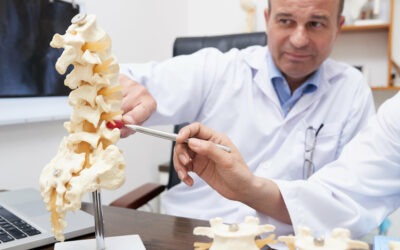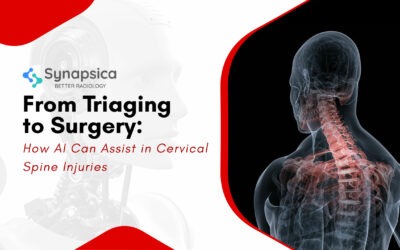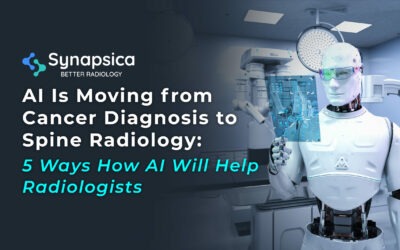
The healthcare industry, though skeptical in the past, is now considering AI applications to enhance patient care and mitigate medical errors.
AI radiology software becoming an integral part of medical imaging
Medical imaging, which is at the heart of modern-day medical diagnosis and patient care, is becoming a highly competitive business. With the rampant growth of imaging data and the increasing use of imaging procedures in diagnosis and patient care, numerous technologies are evolving in the medical imaging space.
The most recent and most promising technology of the era, AI aka Artificial Intelligence, puts forward numerous benefits for diagnostic centers and radiologists in terms of automation, accuracy, speed, etc.
Unfortunately, not all AI radiology software are up to their claim. Even if they perform well, they might create other complexities, such as data privacy and security, slowness of computing, etc. However, this does not mean AI will be unfit for your business or cause any kind of harm. It’s just that you should choose the right AI software that befits your diagnostic center and your radiologists’ requirements.
And finding the right AI radiology software for your practice doesn’t have to be necessarily hard. Here are 6 simple yet powerful questions that will make, finding the right AI solution for your practice, easier and quicker.
1. How it responds to erroneous results, bias, and malfunction
2. Its compliance with data protection regulations
3. Is it user-friendly, platform-agnostic, and easy to explain?
4. Is the existing hardware framework sufficient?
5. Impact on practice’s performance and efficiency
6. How will it drive revenue growth
1. How the software responds to erroneous results, bias, and malfunction
Check how the AI software adapts to new data and whether its performance is based only on the training data.
Along with considering the type of data being used, one should also examine
- How it incorporates user feedback (given by radiologists in case of error detection)
- How the AI algorithm was trained
- The measures taken to eliminate bias
Most importantly, check if the manufacturer provides ongoing support to resolve such issues. If provided, check what type of support is offered.
2. Is the AI radiology software compliant with data protection regulations?
There are countless AI software available in the market, but not all of them are the same and produce the same results. Hence, you should be cautious about the AI software’s compliance and legal obligation to data protection and privacy laws.
Check if the AI software is compatible with data protection policies like GDPR and CCPA, and most importantly whether they are FDA approved.

3. Is the AI radiology software user-friendly, platform-agnostic, and easy to explain?
Check if the AI software is easy-to-use for all types of users (radiologists, doctors, nurses,etc.), if the results produced are easy to interpret and explain through data and visualization (images and graphs).
Verify if non-radiologists, including physicians and patients, are able to understand the data produced by the AI model with little to no assistance for daily usage.
Interoperability is critical, particularly in a workflow or setup where already numerous other systems and software programs like PACS are used. Hence, check if the AI radiology software is platform agnostic.
4. Is the existing hardware framework sufficient or new equipment have to be established?
It is always important to discuss with your IT department regarding the hardware requirements for new software. Particularly for AI algorithm that work on large datasets, system performance is of the utmost importance to make the most of the AI algorithm.
Therefore, in the case of AI software, it’s not just important, but rather a necessity to analyze the hardware requirements along with cost and time implications well in advance, to understand the technology’s impact on the business and service delivery.
5. The impact of the AI radiology software on practice’s performance and efficiency
Radiology is facing a global shortage, a glooming situation that the imaging industry is unprepared for. However, as AI is coming of age, growing numbers of healthcare experts believe AI will help the industry effectively handle radiologist scarcity and the associated challenges. For instance, reducing radiologist workload and errors due to fatigue through automation, improving the accuracy of diagnosis, minimizing reporting TAT, etc.
Therefore, evaluate how the AI software will aid you in handling the growing radiologist shortage and its impact on your practice’s performance and efficiency.
6. How will the AI software drive revenue growth for your center or department?
Last but not least, check how the AI software will impact your revenue.
“An investment is deemed an investment only through its returns.”
Lamine Pearlheart
Therefore, besides considering subjective factors like budget, case processing time, software compatibility, etc., you should consider the software’s impact on your business credibility, business growth, and ROI.
Summing Up
Introducing or adapting new technologies and software can be somewhat challenging and daunting. Particularly in an era when the healthcare industry is becoming increasingly digitized and the impact of technological innovations is inevitable.
In present-day medical practice, a radiologist’s diagnosis and insights are crucial for clinical decision-making and patient care. Therefore, any new technological innovation such as AI should meet the requirements of your practice and professionals. Above all, the new technology must benefit both the patient and the provider.
At Synapsica, we build new-age AI solutions to automate spine reading and reporting to benefit both the patient and the provider. Using Synapsica’s easy-to-integrate AI tools, Spindle and SpindleX, radiology practices can increase diagnostic accuracy and reduce reporting TAT by 80% while improving their efficiency and business credibility.
Also, even before investing you can check your revenue with our AI tools using our ROI calculator. Check Now!




